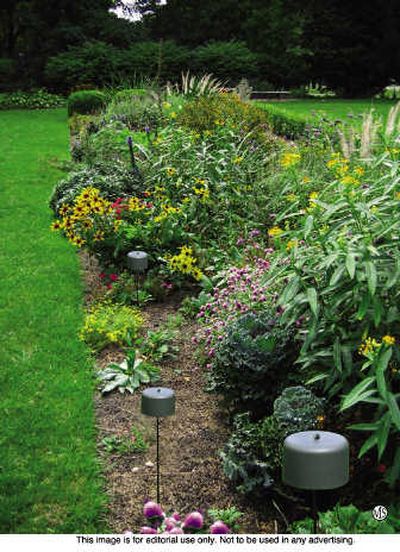A new way to keep deer at bay

They may be cute, but to gardeners across America, deer are serious business. With a few snips of the teeth, these backyard invaders can wreak havoc on beautifully tended landscapes and prized gardens. Flowers, shrubs, fruits, vegetables and other plants are nothing more than a tasty meal for deer, and homeowners throughout the country are fed up with feeding them.
Unfortunately, there has been no easy way to prevent deer from turning a beautiful garden into their own personal buffet. As deer become a more prevalent problem, even in more populated suburban areas, conversations taking place everywhere, from taxicabs to backyard barbecues, have turned to discussions of deer despair. In response to the growing problem, communities have created committees to study the deer problem, and homeowners across the country are spending millions of dollars annually on all sorts of devices and deterrents, usually with less than satisfactory results.
Now, however, help is here. After five years of research and testing, a new form of deer repellent can make a deer-free garden a reality.
“In recent years, there have been two basic kinds of deer repellents: liquid sprays that are applied directly to the plant’s foliage or fruit or granules that can be spread around the base of the plant or shrub,” explains Stewart Clark, director of research and development at Senoret Chemical Company, makers of Deer Fortress, a new deer repellent for consumers and professionals.
“The mode-of-action, in most cases, is either a noxious odor or an offensive taste that repels the deer. However, there are significant issues with both of these,” notes Clark.
Liquid repellents tend to smell horrible and many homeowners shy away from them. The odor can be so bad that, for several hours, homeowners cannot enjoy sitting outside. In addition, since both liquid and granular applications are exposed to the elements, their effectiveness is measured, at best, in weeks. Rain can very quickly wash the repellent off of the plant’s leaves or dissolve it into the ground. Throughout the course of a normal growing season, numerous applications are required and just one missed application can leave a garden open to deer invasions.
“The new Deer Fortress product is unique in the market today because it is virtually odorless to humans, weather-proof, non-toxic and one application lasts all season long,” says Clark.
The product uses dried blood to trigger an innate ‘danger’ response in deer, making them believe a predator is nearby. This active ingredient has been a proven, highly effective repellent for several decades. Studies have shown that, next to fenced enclosures, blood is the most effective way to scare deer away. It produces no noxious smells to humans and is a safe, natural, environmentally friendly product that can be used in any garden, including vegetable gardens. However, until now, it was available only in granules and sprays, which require frequent reapplication during the growing season.
The Deer Fortress repellent is packaged in a patented, weather-proof container that is specially designed to allow the scent to escape but keep rain and other elements at bay. Homeowners simply stake the containers in the ground or hang them in shrubs four to eight feet apart throughout the desired protection area. Then, just sit back, and allow the repellent to work. There’s no messy mixing, spraying or reapplication necessary.
These benefits have made Deer Fortress an attractive solution for deer-dogged homeowners, landscapers and professional grounds crews across the country. Because no reapplication is needed, it is also an economical option, costing less over a season than most traditional repellent options.
It is important to note that no deer repellent is 100 percent effective in every situation, cautions Clark. As natural deer habitats are squeezed by development, deer must search harder for food. Repellents create an unpleasant environment for deer, but some may still forage in yards out of sheer survival instinct. However, proper use and application of repellents can lead to an increased success rate.
“It is best to begin using Deer Fortress or any other deer repellent product at the beginning of the growing season,” says Clark. “It is much easier to discourage deer from feeding on certain plants from the beginning than to interrupt established feeding patterns.”
Consumers with deer repellent questions are invited to call the Deer Fortress hotline at 866.738.7920 for personalized assistance in solving deer dilemmas or log onto www.deerfortress.com for more information.